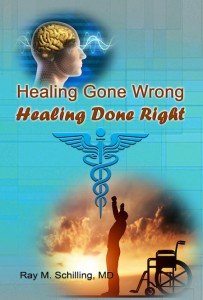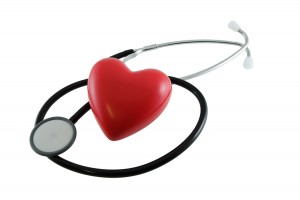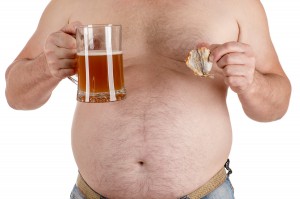One of the news stories in 2016 was about health risks of night shifts. The Bureau of Labor Statistics reported in 2000 that 15 million workers (16.8 % of the working population) were doing alternative shifts (night shift work mixed with daytime shifts). In 2016 they reported 14.8% were working alternate shifts. Among blacks, Asians and Latino Americans the percentage of working alternative shifts was higher, namely 20.8%, 15.7% and 16%, respectively.
Shift work is more common in certain industries, such as protective services like the police force, food services, health services and transportation.
Evidence of health risks of night shifts
1.There are several publications that showed evidence of health risks of night shift workers. Here is a random selection to illustrate the health risks of night shifts.A study from 2015 examined the sleep patterns of 315 shift nurses and health care workers in Iranian teaching hospitals. They found that 83.2% suffered from poor sleep and half of them had moderate to excessive sleepiness when they were awake.
2.This South Korean study examined 244 male workers, aged 20 to 39 in a manufacturing plant. Researchers compared blood tests from daytime workers to blood tests from night shift workers. They also obtained inflammatory markers like the C-reactive protein and leukocyte counts. Night shift workers had significantly higher values. The investigators concluded that shift workers have increased inflammatory markers. This is a sign of a higher risk of developing cardiovascular disease in the future.
Higher mortality and higher cancer risk in nighttime workers
3. A Swedish study found that white-collar shift workers had a 2.6-fold higher mortality over a control group of daytime white-collar workers.
4. Another study compared night workers in the age group of 45 to 54 with daytime workers and found a 1.47-fold higher mortality rate in the night shift workers.
5.In a study from China 25,377 participants were included in a study that investigated cancer risk in males with more than 20 years of night shift work. They had a 2.03-fold increased risk to develop cancer compared to males working day shifts. Women with night shift work in this study showed no effect with regard to cancer development.
BMI and estrogen levels higher in women nighttime workers
6.A Polish study examined hormones and the body mass index (BMI) among 263 women who worked night shifts and 269 women who worked day shifts. When night shift workers had worked more than 15 years at nights, their estrogen levels, particularly in postmenopausal women were elevated compared to the daytime workers who served as controls. The BMI was also increased in the nighttime workers.
Risk for chronic lymphocytic leukemia higher in nighttime workers
7.Chronic lymphocytic leukemia (CLL): a study in Spain showed that working for more than 20 years in rotating night shifts was associated with a 1.77-fold higher risk of developing CLL. The authors noted that melatonin levels in that group were much lower than in controls that worked only day shifts. Working in straight night shifts did not show higher risks of CLL compared to daytime workers.
8. In a Korean study from Seoul 100 female medical technologist who worked nighttime had their melatonin levels tested, which were compared to daytime workers. They measured 1.84 pg/mL of melatonin for the nighttime workers compared to 4.04 pg/mL of melatonin in the daytime workers. The authors felt that this is proof that the diurnal hormone system has been disrupted. Altering the melatonin level also changes the circadian hormone rhythm.
Flatter cortisol curves at night in nighttime workers, also increased diabetes risk
9.A group of 168 female hospital employees doing rotating nightshift work in Southern Ontario hospitals were compared to 160 day workers. Cortisol production was assessed. Cortisol production in day workers and in shift workers on their day shift was similar. However, shift workers on their night shift had flatter cortisol curves and produced less cortisol. The authors felt that this disruption of cortisol production would explain why rotating night shift workers have a higher risk of cardiovascular diseases.
10.A Danish study with female nurses followed 28,731 nurses between 1993 and 2015. Researchers measured the incidence of diabetes in rotating nighttime nurses in comparison to the data from daytime nurses. Night shift workers had a risk between 1.58-fold to 1.99-fold when compared to daytime workers to develop diabetes. The risk for evening shift workers was less (between 1.29-fold and 1.59-fold).
Diurnal hormone rhythm behind health risks of night shifts
Your body has its own rules. It rewards you, if you sleep 7 to 8 hours during the night, but it will penalize you severely, if you turn it upside down. The reason is our built-in diurnal hormone rhythm. A peak of melatonin regulates sleep during the night. Melatonin is released by the pineal gland (on the base of the skull) when it gets dark outside. Daytime wakefulness regulates the release of the stress hormone cortisol from the adrenal glands. These two hormones inhibit each other, cortisol inhibits melatonin and melatonin inhibits cortisol. All the other hormones are also regulated according to the diurnal rhythm: testosterone is highest in the morning, human growth hormone is highest between midnight and 3 AM etc.
Adjustment of the diurnal hormone system
When you work daytime shifts, your diurnal hormone rhythm works just fine. But if you work nighttime shifts, your hormones have to adapt. This is very similar to traveling east or west where you cross several time zones. Your internal diurnal hormone system has to adjust to these changes. Typically it takes 1 day to adjust to a 1-hour time zone difference.
Rotating shift workers have the highest risk of getting sick
In people who work permanent night shifts, the hormone changes stay adjusted and there is no further switching. But most employers want to be “fair” to everybody, so they introduced the rotating night shifts. The publications above show that this is the worst thing you can do. It messes with your diurnal hormone rhythm, and some people never switch completely to the new hours worked. They don’t get enough daytime sleep because the kids are loud during the day etc. The rotating shift workers are running the highest risk of getting sick. The get cancer, diabetes, cardiovascular diseases, obesity, cancer, leukemia, and they have low levels of melatonin.
Conclusion
Shift workers working constant night shifts is less stressful than the more common rotating shift work. This is where you work night shifts for a period of time. Then the schedule switches to day shift, and you keep on rotating. The least health risks occur with regular daytime work. People exposed to rotating night shifts suffer from poor sleep. They have a higher risk of gaining weight, getting obese and acquiring diabetes in time. They are at a higher risk for heart attacks, strokes and cancer. All-cause mortality is about twofold higher than for workers who work day shifts.
The underlying problem seems to be a disturbance of the diurnal hormone rhythm. Normally this regulates our waking/sleeping rhythm and keeps us healthy. But with nighttime work melatonin production weakens, there is less cortisol production and hormone rejuvenation during rest periods suffers greatly. This weakens the immune system, allows cancer to develop and leads to chronic inflammation causing cardiovascular disease and diabetes. The remedy to prevent this from happening is to catch little naps whenever you can during the day. And, if at all possible, work daytime shifts permanently.















